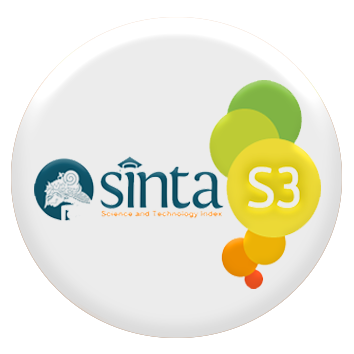Communication Patterns and Strategies for the Spread of Milah Abraham in Palembang:
A Case Study of Recruitment and Prevention Strategies
DOI:
https://doi.org/10.29240/ajis.v10i1.12613Keywords:
Milah Abraham, Communication Pattern, Dissemination Strategy, Prevention Strategy, Member RecruitmentAbstract
The phenomenon of the spread of Milah Abraham in Palembang raises serious concerns about the integrity of Muslims in Indonesia because the teachings carried deviate from the mainstream of Islam and have the potential to create divisions in the Muslim community. This study aims to analyze the communication patterns used by the Milah Abraham group in spreading its teachings and recruitment strategies for members and sympathizers and evaluate prevention efforts made by various parties to maintain the stability and unity of the ummah. This research uses a qualitative method with a descriptive approach. Data were collected through field observations, in-depth interviews with Milah Abraham members, policymakers, and religious organizations, and documentation studies from various sources. The research findings show that the Milah Abraham group applies a systematic and practical communication pattern through a combination of digital media, personal meetings, and spiritual approaches that touch the emotional aspects of potential followers. Their recruitment strategy relies heavily on social networks and persuasive narratives packaged as informal da'wah. In the face of this spread, local Islamic organizations and stakeholders have pursued ahlusunnah wal jamaah-based da'wah as a counter-narrative measure. However, its effectiveness is still limited due to the lack of coordination and continuous religious education at the grassroots level. The original contribution of this research lies in mapping Milah Abraham's communication patterns and recruitment strategies contextually in the Palembang region, which has not been widely described in the literature. This research recommends the importance of strategic collaboration between the government, religious organizations, and the community in strengthening the understanding of the true Islamic faith through a more systematic, educative, and communicative approach.
Downloads
References
Abdurrohman, Abdurrohman, Moh Syarif Hidayatullah, Nurun Sholeh, and Huldiya Syamsiar. “Persepsi Masyarakat Terhadap Jemaah Salafi (Studi Tentang Tipologi Dan Relasi Sosial Jemaah Salafi).” Jurnal Humanitas: Katalisator Perubahan Dan Inovator Pendidikan 10, no. 4 (2024): 665–79.
Abubakar, M. Radikalisme Keagamaan Di Indonesia: Studi Kasus Milah Abraham. Jakarta: Gramedia, 2021.
Al-Makassary, S., & Jahroni, J. Islam Radikal Dan Media Sosial. Yogyakarta: UII Press, 2019.
Alamsyah, R. Strategi Propaganda Digital Dan Pengaruhnya Terhadap Rekrutmen Ekstremis. Bandun: Penerbit ITB, 2022.
Alwi, Z. Peran Ulama Dalam Menangkal Paham Keagamaan Menyimpang. Bandung: Mizan, 2021.
Aprilyawati, Firda Dwi, and Nurudin Nurudin. “Strategi Komunikasi Media Islam Alif. Id Dan Ibtimes. Id Dalam Penyebaran Paham Moderasi.” Islamic Communication Journal 7, no. 1 (2022): 35–52.
Azra, A. Islam, Globalisasi, Dan Radikalisme. Bandung: Mizan, 2020.
Bahriyah, Amalina Zukhrufatul, Moh Mujibur Rohman, M Ridho Ilahi, Ahmad Mahrus, Muhammad Izzul Aulia, and Muhammad Syarif Hidayatullah. "The Existence of Islamic Politics Against Heterodox of Islamic Movements in Indonesia: Post-Independence Rifa'iyah Sect." AJIS 9, no. 1 (2024): 144–65.
Barthes, Roland. "Elements of Semiology Hill and Wang." New York: Seventeenth Printing, 2017.
Conway, M. Online Extremism and Radicalization. London: Routledge, 2019.
Creswell, John W, and J David Creswell. Research Design: Qualitative, Quantitative, and Mixed Methods Approaches. Sage Publications, 2018.
Direktur Pembinaan Masyarakat Kepolisian Daerah Kalimantan Barat. Laporan Identifikasi Pengikut Eks-Gafatar. Pontianak: Kepolisian Daerah Kalimantan Barat, 2016.
Dzinnuroini, Dzinnuroini, and Ahidul Asror. “Strategi Komunikasi Rumah Moderasi Beragama Universitas Islam Negeri Kiai Haji Achmad Siddiq Jember Dalam Menyebarluaskan Nilai-Nilai Islam Moderat.” Icon: Islamic Communication and Contemporary Media Studies 1, no. 1 (2022): 1–14.
Edyar, Busman. "Religious Radicalism, Jihad And Terrorism." AJIS 2, no. 1 (2017): 1–24.
Effendy, O. U. Komunikasi Dakwah. Jakarta: Prenada Media, 2017.
Faisal, Muhammad Rizal Rizqi. “Aliran Gafatar Dan Fatwa Sesat MUI ‘Analisis Fatwa Majelis Ulama Indonesia No. 06 Tahun 2016 Tentang Aliran Gerakan Fajar Nusantara (GAFATAR).’” Jakarta: Fakultas Syariah dan Hukum UIN Syarif Hidayatullah, 2016.
Fauzan, R. Strategi Pemerintah Dalam Menangani Gerakan Keagamaan Menyimpang. Jakarta: Penerbit Nasional, 2023.
Hasani, I., & Naipospos, B. Kelompok Radikal Dan Strategi Rekrutmen. Jakarta: Pustaka Pelajar, 2019.
Hegghammer, Thomas. Jihadi Culture: The Art and Social Practices of Militant Islamists. Cambridge University Press, 2017.
Hidayat, M. Dinamika Rekrutmen Dan Radikalisasi Dalam Gerakan Keagamaan Di Indonesia. Jakarta: Pustaka Al-Azhar, 2019.
Isabella, Isabella, and Periansyah Periansyah. “Peningkatan Partisipasi Perempuan Dalam Pencegahan Radikalisme Dan Terorisme Di Kota Palembang.” Jurnal Abdimas Mandiri 5, no. 1 (2021): 37–43.
Jones, S. Radical Movements in Southeast Asia. New York: Routledge, 2022.
Junaidi, Ahmad, Ahmad Fauzi, and Shodiq Shodiq. “STRATEGI KOMUNIKASI PENGURUS DALAM MENINGKATKAN KARAKTER RELIGIUS SANTRI PONDOK PESANTREN ASY-SYAFI’IYAH SUKOREJO BANGSALSARI JEMBER.” Jurnal Ilmu Komunikasi PROGRESSIO 5, no. 2 (2024): 1–12.
Khalid, Muhammad. “Pola Komunikasi Keagamaan Pada Komunitas Khilafatul Muslimin Di Indonesia.” Ath-Thariq: Jurnal Dakwah Dan Komunikasi 5, no. 2 (2021): 149–61.
Littlejohn, Stephen W, and Karen A Foss. Theories of Human Communication. Waveland Press, 2019.
Manurung, R. Dakwah Digital Di Era Disrupsi: Studi Media Sosial Dan Penyebaran Ajaran Keagamaan. Jakarta: Gramedia Pustaka Utama, 2022.
Masyhar, R. Pemikiran Keagamaan Kontemporer. Yogyakarta: UGM Press, 2016.
Moleong, Lexy J. “Metodologi Penelitian Kualitatif (Edisi Revisi),” 2019.
Downloads
Published
How to Cite
Issue
Section
Citation Check
License
Copyright (c) 2025 Imam Haromain, K.A Bukhori, Nurseri Hasnah Nasution

This work is licensed under a Creative Commons Attribution-NonCommercial-ShareAlike 4.0 International License.
Authors who publish with this journal agree to the following terms:- Authors retain copyright and grant the journal right of first publication with the work simultaneously licensed under a Creative Commons Attribution License (CC BY-NC-SA 4.0) that allows others to share the work with an acknowledgment of the work's authorship and initial publication in this journal.
- Authors are able to enter into separate, additional contractual arrangements for the non-exclusive distribution of the journal's published version of the work (e.g., post it to an institutional repository or publish it in a book), with an acknowledgment of its initial publication in this journal.
- Authors are permitted and encouraged to post their work online (e.g., in institutional repositories or on their website) prior to and during the submission process, as it can lead to productive exchanges, as well as earlier and greater citation of published work (See The Effect of Open Access).







